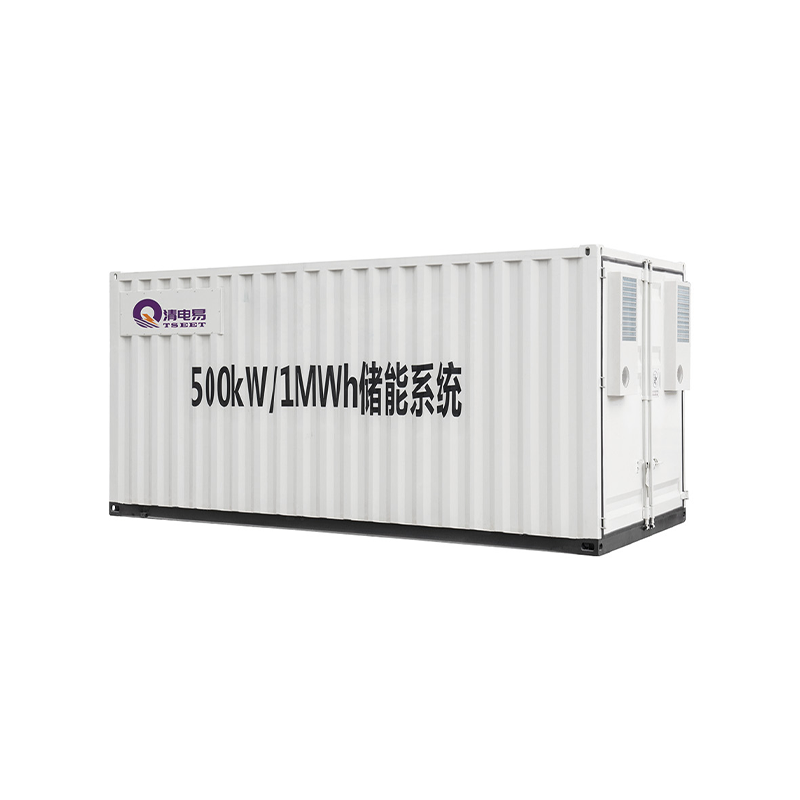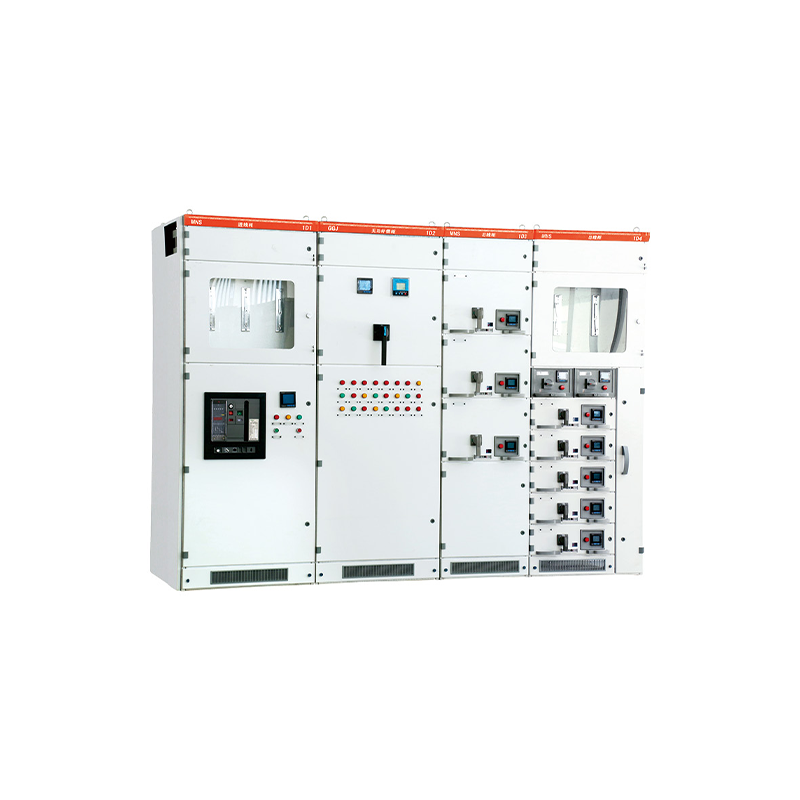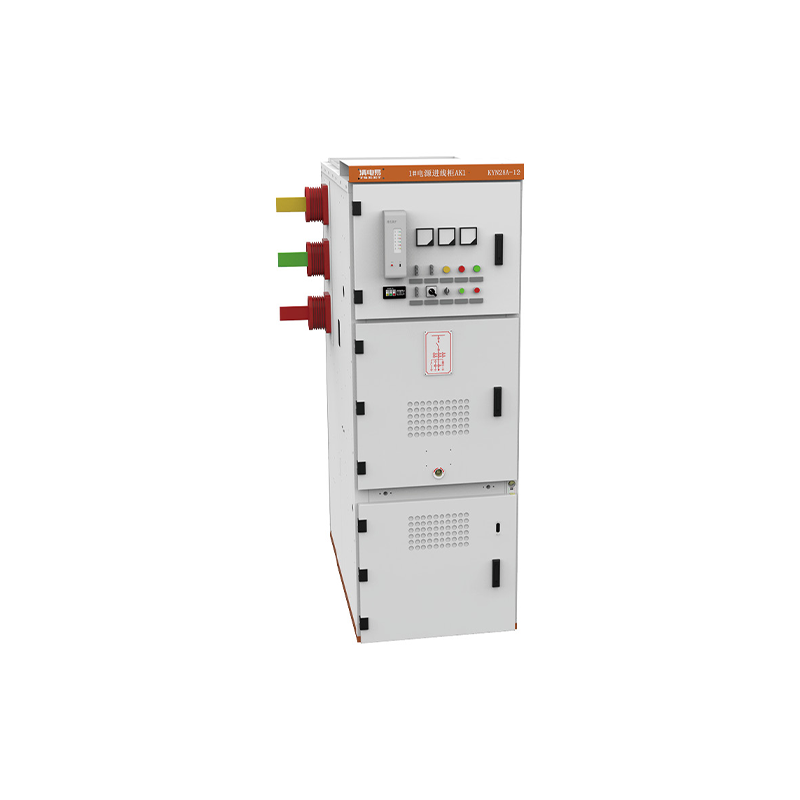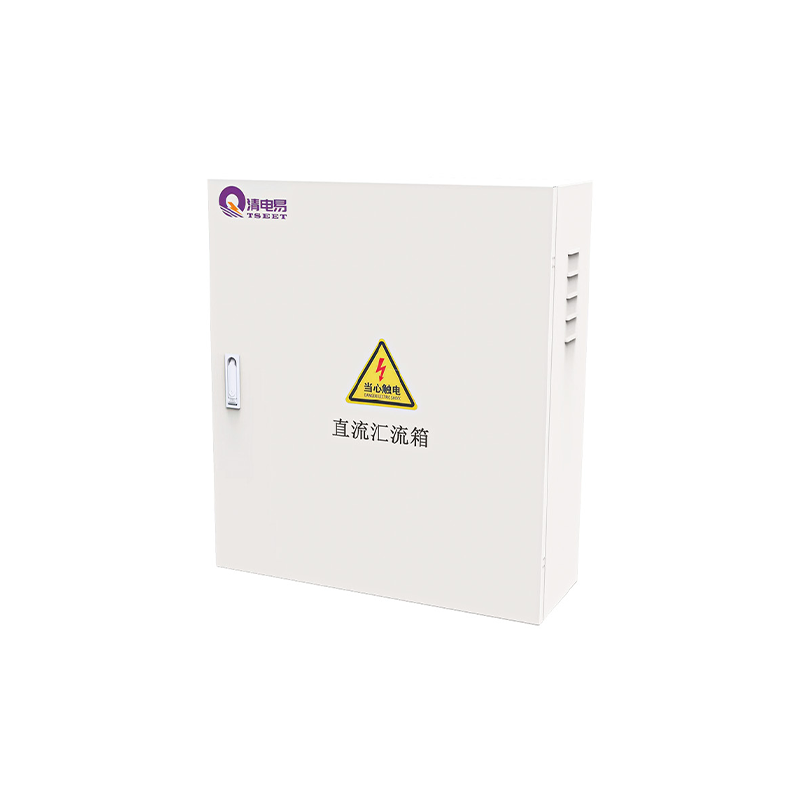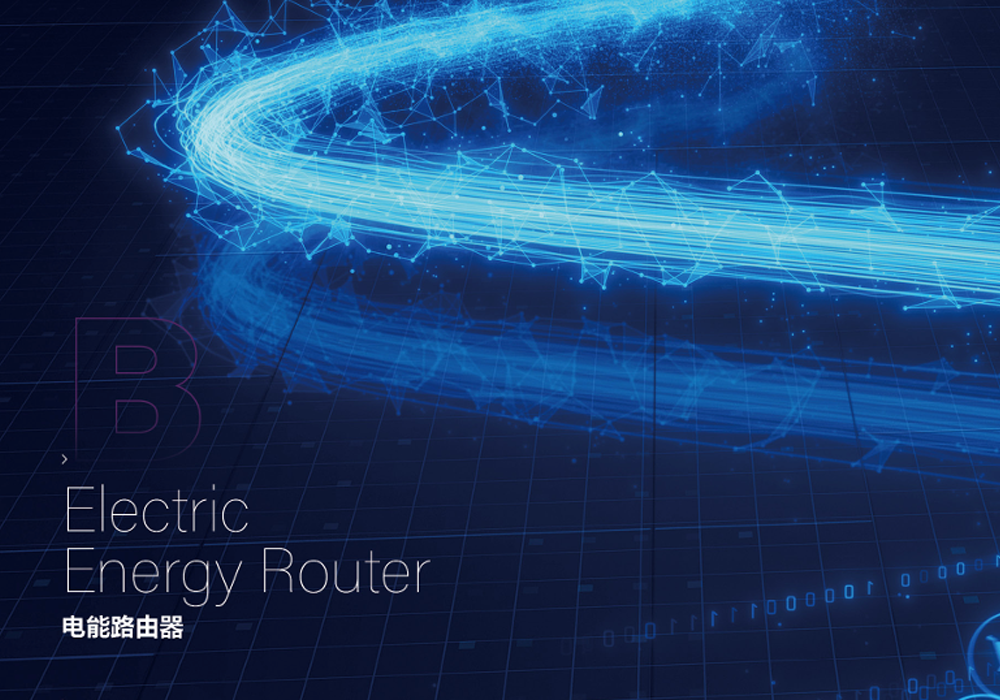

Electric Power Router Electric Power Router
Electric Power Routing Technology and Power Electronic Networking
Power routing techniques and power electronic networking
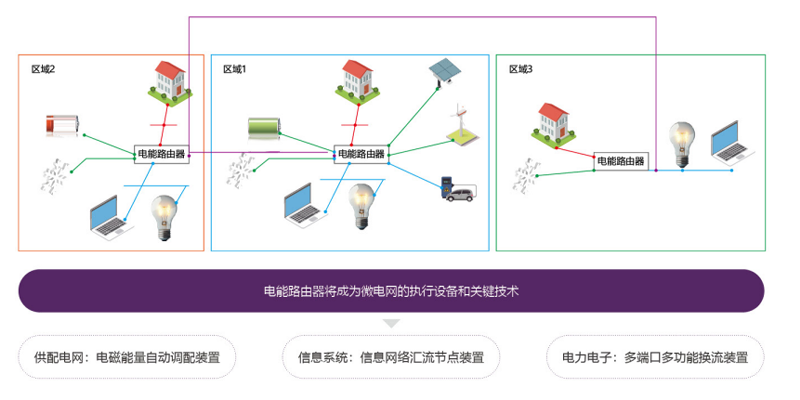
Application Scenarios for Electric Energy Router
Application Scenarios for Electric Energy Router
1. High Proportion of Distributed Photovoltaic Integration
Low-voltage DC port builds a DC microgrid, efficiently collecting distributed rooftop photovoltaic power.
Low-voltage AC port builds a dual-power supply system for loads, achieving high-reliability power supply for photovoltaic integration and loads.
Coordination control of each port to suppress the impact of random plug-and-unplug of large-capacity charging loads.
2. Integrated Photovoltaic Storage and Charging Station
Through the integrated charging and swapping architecture, reducing the comprehensive construction cost, and low-voltage DC port realizing photovoltaic access.
The AC port uses high-frequency isolation modules to achieve four-quadrant operation, electrical isolation, and reactive power compensation.
Low-voltage DC module array realizes 300kW~1200kW flexible charging.
3. Inter-regional Power Mutual Assistance in Industrial Parks
Site limitations result in a low proportion of distributed new energy in this area, and redundant resources cannot be fully utilized.
Utilizing cross-regional sites, realizing resource sharing and complementation through DC ports, and improving the proportion of green electricity for intensive loads.
Asynchronous power supply network for different types of loads to improve system adjustability and dynamic stability.
4. Low-voltage Flexible Smart Power Supply and Distribution
Under weak grids, seamless on/off-grid switching to meet the needs of grid friendliness, reliable power supply, and green efficiency.
Realizing friendly interaction between source, grid, load, and storage, cluster operation of routing devices, and improving power supply reliability.
Strategies to achieve peak-valley electricity regulation, mutual assistance power supply, second-level power restoration, orderly charging, and core power protection.
Product Features
Product Features
Modular design, plug-and-play/consistent hardware for port modules/software-defined port functions/online switching of port functions/decentralized port coordination/high-efficiency scheduling coordination strategy
Technical Parameters
Technical Parameters
|
Port 1: Utility Power Area 1 Input |
Port 4: Energy Storage Battery |
||
|
Rated Capacity (kVA) |
50*N |
Rated Power (kW) |
50*N |
|
Rated Grid Voltage (V) |
AC380±7% |
Rated Current (A) |
100*N |
|
Rated Current (A) |
95*N |
Battery Voltage Range (V) |
220-650 |
|
Grid Frequency (Hz) |
50Hz/60Hz±3Hz |
Maximum Charge/Discharge Current (A) |
110*N |
|
Total Harmonic Distortion (THDi) |
≤5% (full load) |
Battery Type |
Lithium battery/Lead-acid battery/Super capacitor |
|
Grid Connection Type |
Three-phase three-wire (three-phase four-wire optional) |
Discharge Depth |
80%DOD/50%DOD |
| Battery Capacity |
50KWh*N (recommended) |
||
|
Port 2: Utility Power Area 2 Input (optional 1) |
Port 5 (optional 2): DC 750V/800V load port |
||
|
Rated Capacity (kVA) |
50*N |
Rated Power (kW) |
60*N |
|
Rated Grid Voltage (V) |
AC380±7% |
||
| Rated Output Voltage (V) | DC750 | ||
|
Rated Current (A) |
95*N |
Maximum Output Current (A) | 80*N |
|
Grid Frequency (Hz) |
50Hz/60Hz±3Hz |
Output Voltage Ripple |
≤1%FS |
|
Total Harmonic Distortion (THDi) |
≤5% (full load) |
|
|
|
Grid Connection Type |
Three-phase three-wire (three-phase four-wire optional) |
||
|
Port 3: Photovoltaic Input (built-in DC DC) |
Port 6: DC 375V/220V load port |
||
|
Rated Power (kW) |
50*N |
Rated Power (kW) |
10*N |
|
Rated Current (A) |
100*N |
Rated Current (A) |
46*N |
|
Maximum Photovoltaic Input Current (A) |
110*N |
Rated Output Voltage (V) |
DC200-650V |
|
Starting Voltage (V) |
320 |
Maximum Output Current (A) |
50*N |
|
DC Input Voltage Range (V) |
320-650 |
Output Voltage Ripple |
≤1%FS |
|
MPPT Operating Voltage Range/Rated Voltage (V) |
320-650/500 |
||
|
Number of MPPTs/Number of strings per MPPT |
1/1 |
||
|
Overall Parameters |
|||
|
Input/Output Switch |
Available | ||
|
Overcurrent, Overvoltage Protection |
Available | ||
|
Insulation Fault |
Available | ||
|
Display |
Touch Screen | ||
|
Communication Interface |
RJ45 (default)/RS485 | ||
|
Communication Protocol |
ModbusTCP/ModbusRTU standard protocol | ||
|
Cooling Method |
Forced Air Cooling | ||
|
Operating Temperature (°C) |
-5~+45 | ||
|
Protection Level |
IP20 | ||
|
Development Environment |
TwinCAT3.1 | ||
|
Development Language |
ST/C++ | ||



